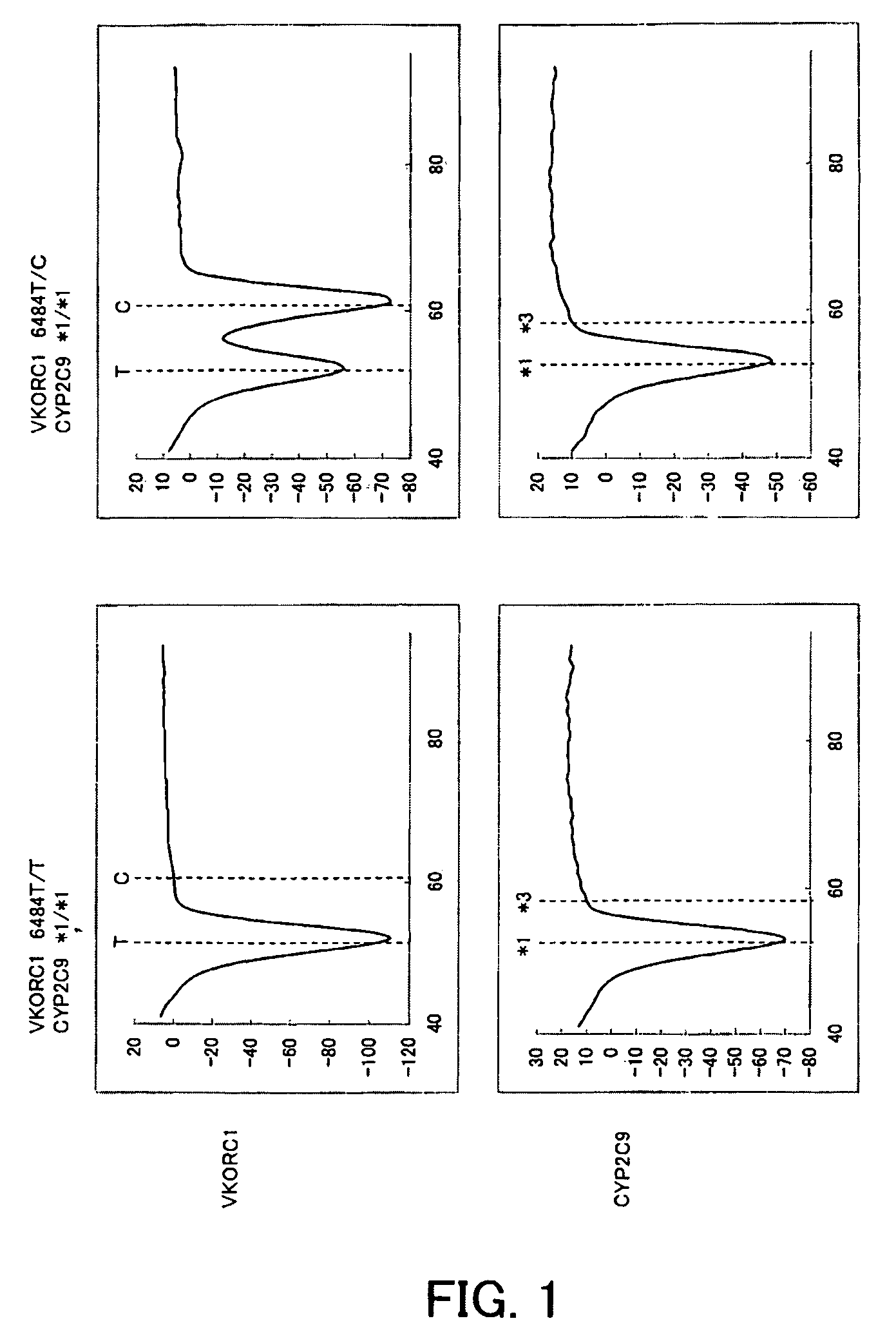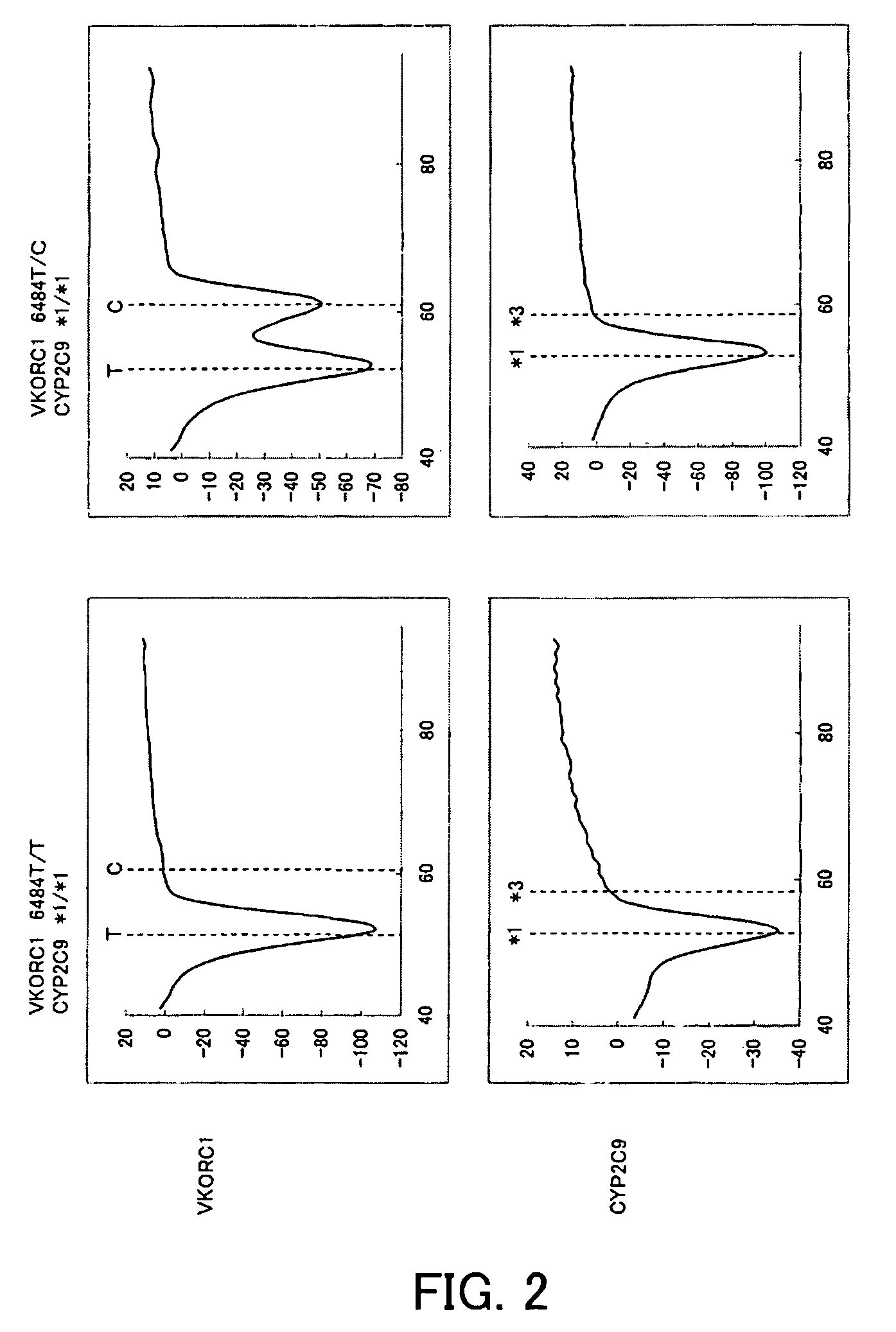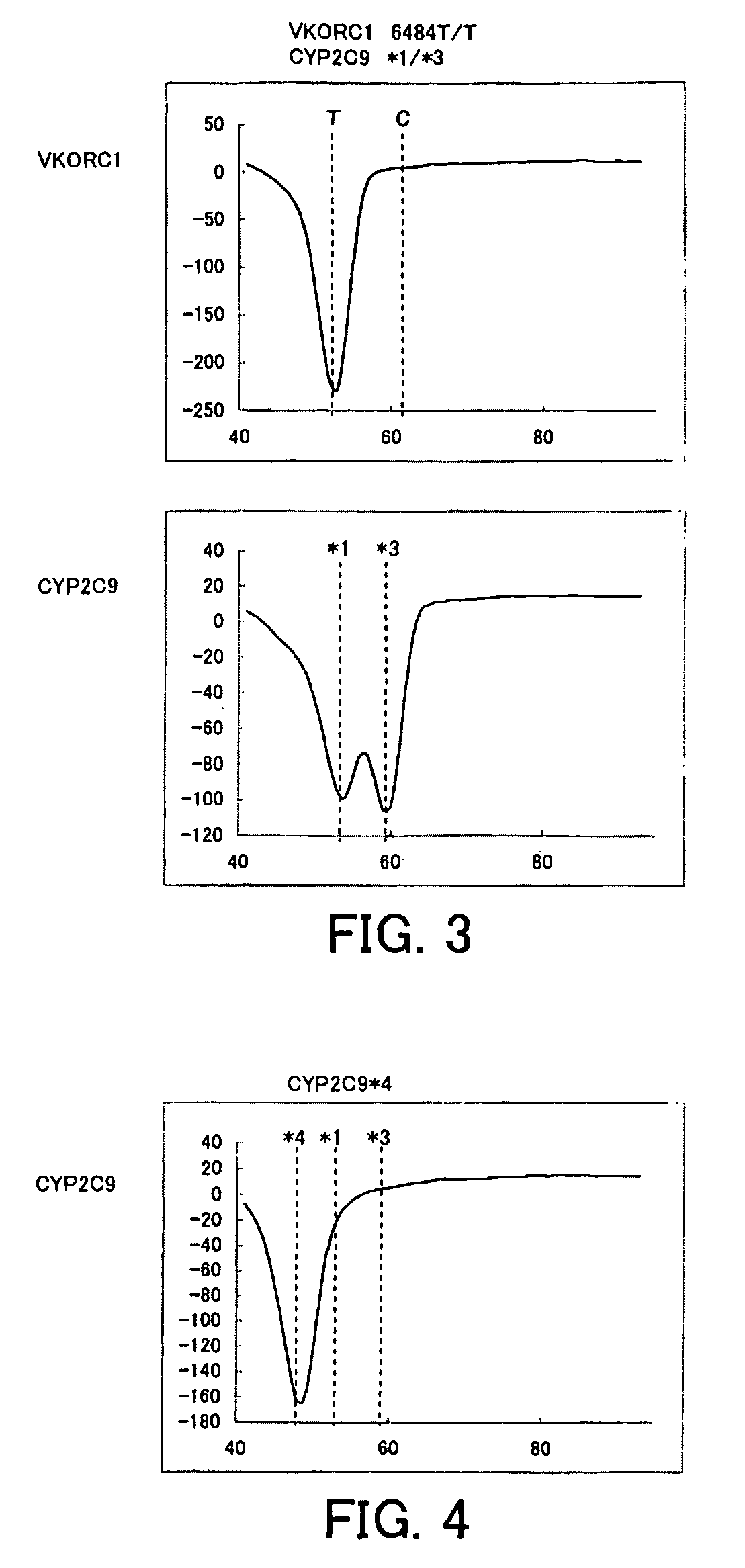Primer set for gene amplification, reagent for gene amplification including the same, and uses thereof
a primer set and gene technology, applied in the field of primer sets for gene amplification, reagents for gene amplification including the same, can solve the problems of affecting the accuracy of analysis, so as to achieve faster and more easily the effect of amplification reaction, reducing time and cost for amplifying target regions, and automating operation
- Summary
- Abstract
- Description
- Claims
- Application Information
AI Technical Summary
Benefits of technology
Problems solved by technology
Method used
Image
Examples
example 1
[0128]Blood was collected from two subjects using heparin lithium blood collection tubes (Samples 1 and 2). Subsequently, 0.1 μL of blood thus obtained was added to 50 μL of PCR reaction solution having the composition described below, and then PCR was performed using a thermal cycler. Conditions for PCR were as follows. That is, after it was treated at 95° C. for 60 seconds, one cycle of treatment at 95° C. for 1 second and at 58° C. for 15 seconds was repeated for 50 cycles, and further it was treated at 95° C. for 1 second and at 40° C. for 60 seconds. Subsequently, the PCR reaction solution was heated from 40° C. to 95° C. at a rate of temperature climb of 1° C. / 3 seconds, and the change in fluorescence intensity over time was measured. The measurement wavelengths were 450 to 480 nm (for detection of the fluorescent dye, PACIFIC BLUE) and 515 to 555 nm (for detection of the fluorescent dye, BODIPY FL). The time required for 50 cycles of PCR was approximately one hour.
[0129]
TABLE...
example 2
[0134]Buccal cells were collected with swabs from two subjects and each were then suspended in 500 μL of sterile distilled water (Samples 3 and 4). Thereafter 2.5 μL of each suspension was added to 47.5 μL of PCR reaction solution having the composition described below, and then PCR was performed and the change in fluorescence intensity over time was measured in the same manner as in Example 1. The measurement wavelengths were 450 to 480 nm (for detection of the fluorescent dye, PACIFIC BLUE) and 515 to 555 nm (for detection of the fluorescent dye, BODIPY FL). The time required for 50 cycles of PCR was approximately one hour.
[0135]
TABLE 7Distilled water20.755% NaN30.520% BSA140% Glycerol12.510 × Gene Taq buffer *52.5 mM dNTPs45 μM probe for CYP2C91100 μM CYP2C9 F1 primer0.5100 μM CYP2C9 R1 primer0.255 μM probe for VKORC11100 μM VKORC1 F2 primer0.25100 μM VKORC1 R2 primer0.55 U / μl Gene Taq FP *0.25Total47.5 μL
[0136]The respective results of Samples 3 and 4 are shown in FIG. 2. As sho...
example 3
[0137]Purified human genome was prepared in which base 521 in SEQ ID NO: 1 exhibited a heterozygote of CYP2C9*1 / *3 (521A / 521C) and base 6484 of the VKORC1 gene (base 484 in SEQ ID NO: 2) exhibited a homozygote of 6484T / T. Thereafter, 1 μL of this purified genome was mixed with 49 μL of PCR reaction solution having the composition described below, and then PCR was performed and the change in fluorescence intensity over time was measured in the same manner as in Example 1. The measurement wavelengths were 450 to 480 nm (for detection of the fluorescent dye, PACIFIC BLUE) and 515 to 555 nm (for detection of the fluorescent dye, BODIPY FL). The time required for 50 cycles of PCR was approximately one hour.
[0138]
TABLE 8Distilled water22.255% NaN30.520% BSA140% Glycerol12.510 × Gene Taq buffer *52.5 mM dNTPs45 μM probe for CYP2C91100 μM CYP2C9 F1 primer0.5100 μM CYP2C9 R1 primer0.255 μM probe for VKORC11100 μM VKORC1 F2 primer0.25100 μM VKORC1 R2 primer0.55 U / μl Gene Taq FP *0.25Total49 μ...
PUM
| Property | Measurement | Unit |
|---|---|---|
| pH | aaaaa | aaaaa |
| absorption wavelength | aaaaa | aaaaa |
| detection wavelength | aaaaa | aaaaa |
Abstract
Description
Claims
Application Information
 Login to View More
Login to View More - R&D
- Intellectual Property
- Life Sciences
- Materials
- Tech Scout
- Unparalleled Data Quality
- Higher Quality Content
- 60% Fewer Hallucinations
Browse by: Latest US Patents, China's latest patents, Technical Efficacy Thesaurus, Application Domain, Technology Topic, Popular Technical Reports.
© 2025 PatSnap. All rights reserved.Legal|Privacy policy|Modern Slavery Act Transparency Statement|Sitemap|About US| Contact US: help@patsnap.com



